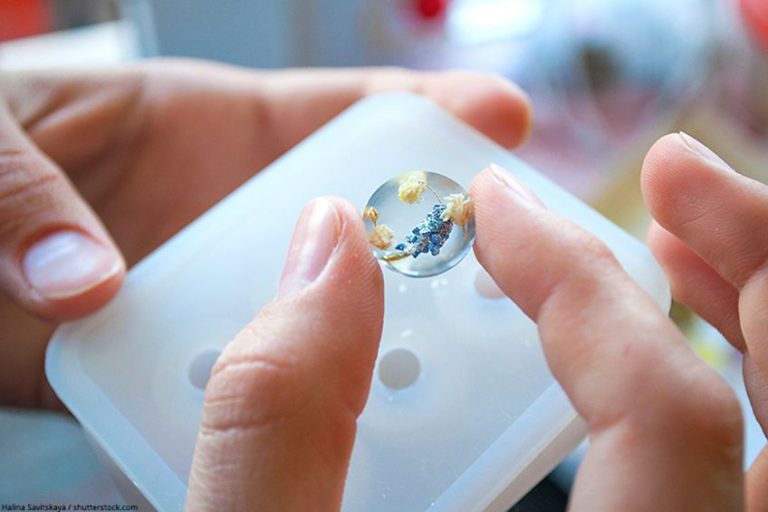Printmaking Techniques – From Etching to Embossing
Welcome to the enchanting world of printmaking, where creativity meets craftsmanship in a dance of ink and paper! From the ancient traditions of woodcuts to the modern marvels of screen printing, printmaking techniques have captivated artists and audiences alike for centuries. Join us on a journey through the rich history, diverse methods, and endless possibilities of printmaking. Whether you’re a seasoned printmaker or a curious beginner, prepare to be inspired by the magic of this timeless art form.
Table of Contents
Key Takeaways
- Printmaking is a technique used by artists to create multiple images from a single original design.
- Different printmaking processes include relief, intaglio, planographic, and stencil, each with its distinct characteristics.
- The medium has had a significant artistic and cultural impact by democratizing artwork accessibility and facilitating wide distribution.

What Is Printmaking?
Printmaking is an art form that allows artists to produce artworks through techniques of multiplication, creating multiples of a single image. This array of methods leverages various materials and implements to transfer ink from a matrix to another substance, such as paper or fabric. Artists rely on different printmaking techniques to express their vision, each offering distinct textures and effects, from the bold lines of woodcuts to the fine details of etchings.
Materials used may include wood, metal, linoleum, or even stone, and each technique requires specialized tools and a particular process that can be complex and labor-intensive.
The impact of printmaking extends beyond the creation of art—it has played a significant role in cultural and historical contexts. The ability to replicate images has facilitated the wide dissemination of works of art, making them more accessible to a broader audience and allowing artists to share their messages more effectively. It also offers a way for collectors to invest in art at a more accessible price point. By understanding and appreciating the diverse processes and tools involved, one gains insight into how printmaking contributes to the art world, both as a form of creative expression and as a method of communication.
History and Evolution of Printmaking
The genesis of printmaking traces back to the 1st century in China with the advent of woodblock printing. Over the centuries, it evolved and spread to Europe, where it developed into different styles and methodologies. By the 15th century, printmaking was firmly established in the Western world with artists like Albrecht Dürer advancing the craft, predominantly through techniques like woodcut and engraving. Printmaking has continually adapted, with each period in art history leaving its mark on the techniques and styles used.
The advent of the printing press revolutionized the distribution of images, and consequently, visual communication.

Meanwhile, the Industrial Revolution brought lithography, which allowed for faster and more detailed image production. The 20th century witnessed a radical expansion in printmaking techniques, integrating modern processes like screenprinting. This period saw artists experimenting with various materials and methodologies, thus pushing the boundaries of traditional printmaking. Today’s printmaking continues to be a dynamic art form, reflecting both historical practices and contemporary innovations, keeping the tradition alive in the digital age.
Popular Printmaking Techniques and Processes
Printmaking is a dynamic art form utilizing various techniques to transfer images from a matrix to a surface such as paper or fabric. The chosen process often influences textures and patterns within the artwork, defining its character.
Relief Printing
Relief printing is one of the oldest forms of printmaking. In this technique, artists carve into a block of material, often wood (woodcut) or linoleum (linocut), creating a pattern of grooves. Ink is applied to the remaining raised areas, and the block is then pressed onto paper or fabric, transferring the inked design. Relief prints are noted for their bold contrast of line and texture.
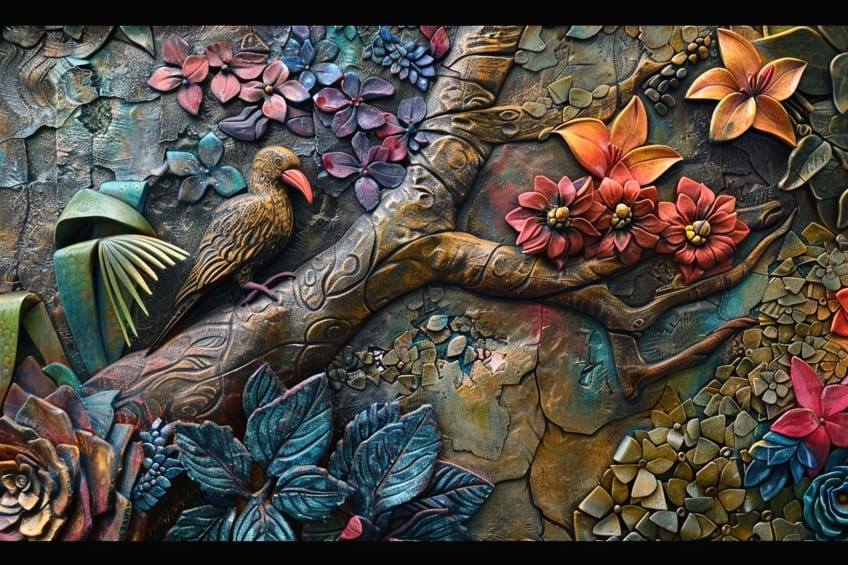
Intaglio Printing
In intaglio printing, the design is incised into a metal plate using tools like a burin or through a process such as etching. The engraving involves carving into the plate, while etching involves coating the plate with a protective layer, drawing the design, and then exposing the plate to acid.
The grooves hold the ink, and when the plate is run through a printing press under high pressure, the ink transfer occurs, sharply defining the image onto paper.
Lithography
Lithography is a planographic printing process based on the principle that oil and water do not mix. The artist draws with a greasy substance onto a limestone plate or a metal surface, which is then chemically treated. When ink is applied, it adheres to the greasy drawing but not the water-covered areas. A press provides the pressure to transfer the image onto the paper, allowing for subtle gradations of tone.
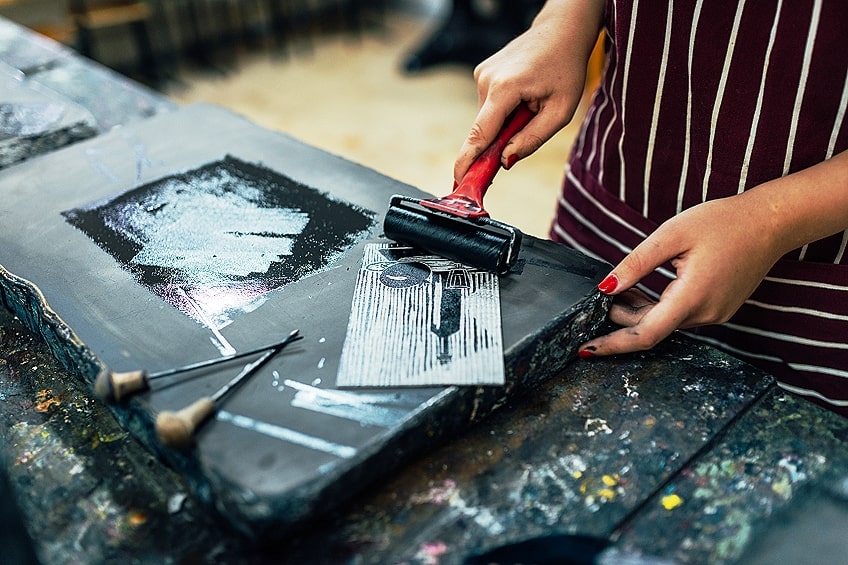
Screen Printing
Also known as silkscreen printing, screen printing involves using a stencil and a screen—often made of silk or polyester. The image is created by blocking out areas of the screen. Ink is forced through the open areas onto the substrate, such as paper, fabric, or even metal.
Screen printing is favored for its versatility and the ability to produce vibrant, opaque colors.
Monotype and Monoprint
Monotype and monoprint are unique among printmaking techniques due to their one-of-a-kind nature. A monotype involves painting or drawing with ink on a smooth, non-absorbent surface, transferring the image to paper with a press, usually creating a single impression. Monoprinting also produces a single impression, but it combines the monotype process with other printmaking techniques, such as relief or intaglio, to add patterns and textures. Collagraphy, a variant of monoprinting, uses a collage of materials on the printing plate to create diverse textures within the print.
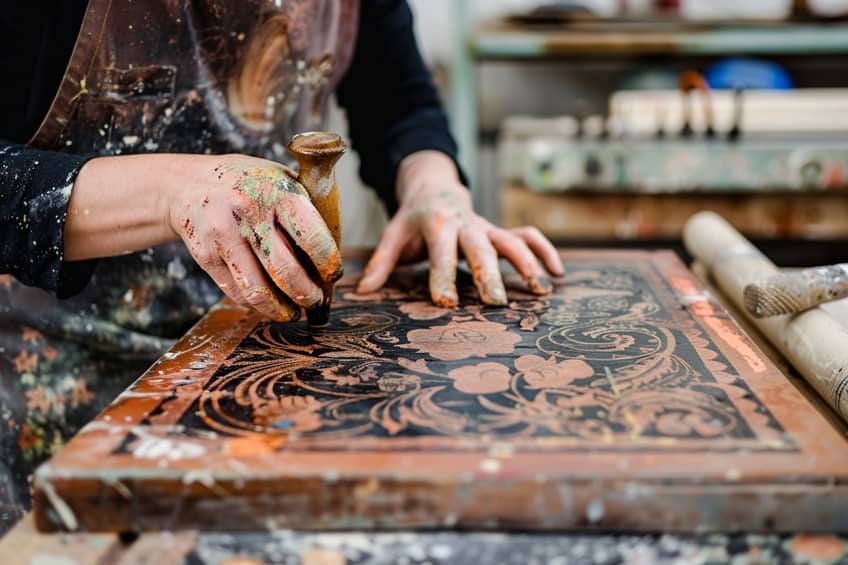
Other Techniques to Know
In addition to the commonly referenced methodologies in printmaking, such as lithography and screenprinting, there are a variety of other methods that artists employ to create intricate and often distinctive prints. Each technique has its own subtleties and requires a unique set of tools and processes.
Linocut
Linocut is a printmaking technique in which a sheet of linoleum is used as the relief surface. The artist carves into the linoleum, removing areas to create an image. When inked, these remaining raised areas transfer the image onto paper. Linocuts are known for their bold contrasts and ability to render expressive lines.
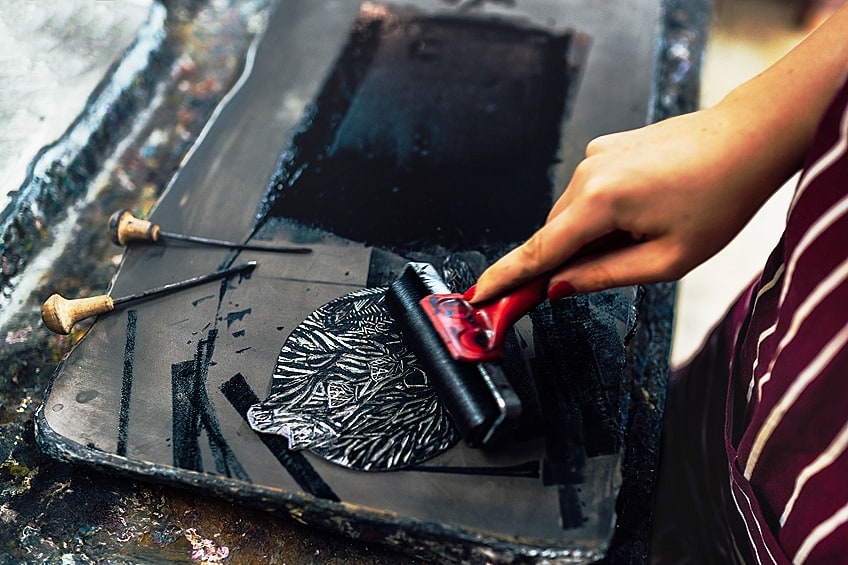
Woodcut
Woodcut is one of the oldest printmaking techniques and involves carving an image into the surface of a wood block. The areas that are cut away do not receive ink, which allows the artist to create images with a range of tones and textures.
Woodcuts often exhibit a unique wood grain pattern in the final print.
Etching
Etching uses a metal plate, typically copper or zinc, which is coated with a protective ground. The artist draws through the ground to expose the metal before immersing the plate in an acid bath, etching into the exposed areas. After the ground is removed, the plate is inked, wiped, and pressed onto paper, resulting in a print with fine lines and a high level of detail.

Engraving
Engraving entails cutting or incising a design into a hard surface, often a metal plate, using a tool called a burin. The technique is known for its precision and is capable of producing prints with delicate lines and subtle gradations of shade.
Aquatint
Aquatint is a variant of etching, aimed at achieving tonal effects rather than lines. A metal plate is dusted with a resin and then heated to create a textured ground. The plate is then submerged in acid to etch around the particles, creating a pitted surface that holds ink. This method allows for the creation of complex tonal ranges similar to watercolor washes.
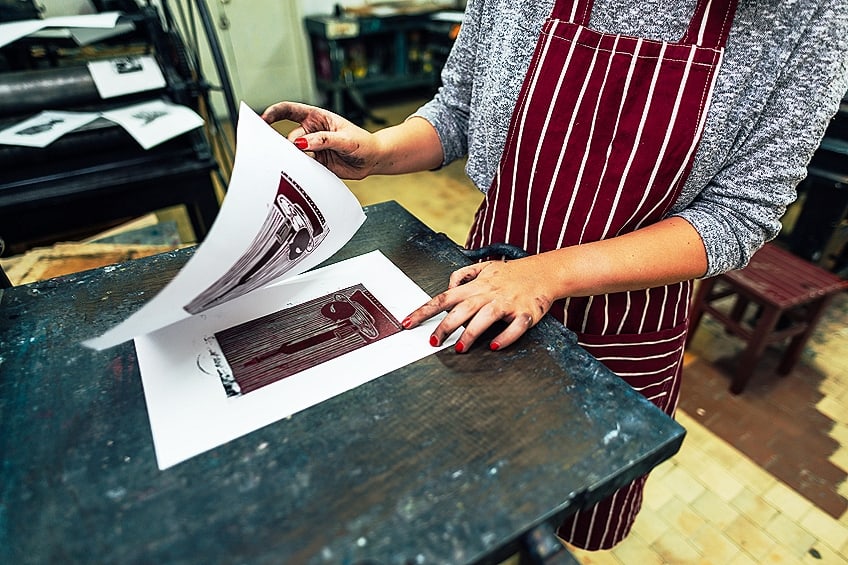
Collagraph
Collagraph is a highly versatile printing method where the artist builds up a collage of materials on a base plate. These materials can be string, fabric, or even acrylic textures, and they create prints with a variety of tones and textures when inked and run through a press.
The selection and combination of materials result in unique, often unexpected print qualities.
Materials and Tools in Printmaking
Printmaking is an artistic process that requires specific materials and tools to transfer a design from a matrix to paper or other surfaces. The choice of materials can greatly influence the final print’s texture, depth, and aesthetic. Matrix materials include:
- Wood: For relief prints and woodcuts, where areas are carved away to create an image.
- Metal: Often used in engraving and etching; copper, zinc, and aluminum are common.
- Glass: Sometimes utilized for its smooth surface.
Tools for carving and etching include:
- Gouges and chisels: Primarily for wood engraving and carving.
- Burins: Sharp tools for engraving, traditionally on metal plates.
- Acid: Applied on a metal plate covered with a resistant ground to etch designs.
Artists use specialized printmaking ink to ensure adequate coverage and a lasting impression. Serigraphy, or screen printing, might employ various inks or paints to achieve different effects. To transfer the image to the chosen paper, consistent and even pressure is crucial. Printmakers use a variety of presses, from simple hand-barrens for relief prints to intricate roller presses for intaglio.

Printmakers select paper based on how it complements their techniques and materials. Choices range from heavy cotton rag for textural depth to delicate rice paper for fine detail. The combination of these tools and materials forms the backbone of the printmaking domain, each chosen with a precision that reflects the artist’s envisioned outcome. From ancient Chinese woodcuts to contemporary metal engravings, these elements serve as the foundation of this enduring art form.
The Artistic and Cultural Impact of Printmaking
Printmaking is a versatile art form that has had a significant impact on both culture and visual arts. Historically, it served not only as a medium for artistic expression but also played a pivotal role in disseminating information and stories. Printmaking techniques such as woodcut, etching, and engraving facilitated the mass reproduction of works of art, allowing finer control over line and color. Relief printmaking, including woodblock printing, involves carving an image into wood, applying ink to the raised surface, and then pressing it onto paper or fabric. Intaglio printmaking, which encompasses etching and engraving, requires incisions into a plate to hold the ink.
These methods gave artists the ability to create multiple impressions, or editions, of a single image, contributing to both the availability and affordability of art.
Through the creation of limited editions, printmakers have also been able to maintain a sense of authenticity and value in their work, with museums such as the Museum of Modern Art showcasing the creative and historical significance of printmaking. The artistic process behind creating prints injects individuality into each impression, despite the potential for high-volume reproduction. Relief, intaglio, and newer techniques like linocut and digital prints have expanded the vocabulary of visual qualities accessible to artists.
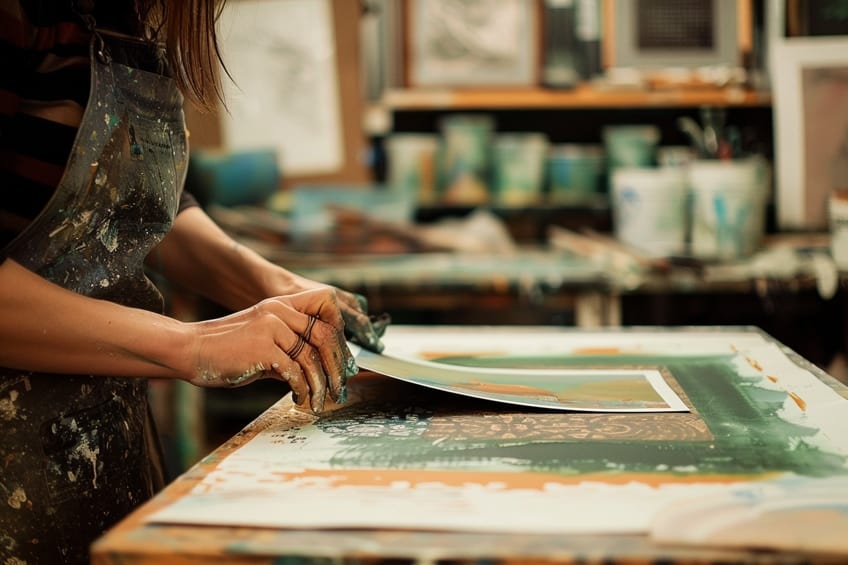
Moreover, printmaking’s capacity for variety and innovation is evident in its integration into fine art and commercial use, such as in advertising. The interplay between artistic creativity and the technical demands of printmaking has fostered a unique narrative where the medium itself becomes part of the story, enriching the work of art. From woodcuts in the Museum of Modern Art to advertising, and the reproduction of digital prints, printmaking has shaped the cultural landscape, reflecting a fusion of traditional craftsmanship and modern creativity.
As we conclude our exploration of printmaking techniques, let us remember that in the realm of printmaking, there are no limits to creativity. From the meticulous precision of etching to the spontaneous energy of monotype, each technique offers its own unique charms and challenges. As artists, let us continue to push the boundaries, experiment fearlessly, and embrace the delightful surprises that come with every pull of the press. So pick up your tools, ignite your imagination, and let the journey of printmaking continue to inspire and delight for generations to come!
Frequently Asked Questions
What Are the Four Main Types of Printmaking?
The four main types of printmaking are relief, intaglio, planographic, and screenprinting. Relief printing involves carving away parts of a surface, like wood or linoleum. Intaglio techniques include etching and engraving where the image is incised into a surface. Planographic printmaking, such as lithography, involves creating images on flat surfaces without carving. Screenprinting uses a mesh screen to transfer ink onto a substrate, except in areas made impermeable to the ink by a blocking stencil.
Which Printmaking Technique Is Considered the Easiest for Beginners?
Linocut, a type of relief printing, is generally considered one of the easiest printmaking techniques for beginners. It involves carving into a linoleum block, which is softer and easier to cut than wood, making the technique accessible and less intimidating for those new to printmaking.
What Are Some Common Printmaking Tools Required for Creating Prints?
Some common printmaking tools include carving tools such as gouges and chisels for relief printing, etching needles and burnishers for intaglio, brayers and rollers for ink application, squeegees for screenprinting, and lithography stones or plates for planographic prints. In addition to these, artists also use various inks, papers, and presses to create and transfer their images.
Isabella studied at the University of Cape Town in South Africa and graduated with a Bachelor of Arts majoring in English Literature & Language and Psychology. Throughout her undergraduate years, she took Art History as an additional subject and absolutely loved it. Building on from her art history knowledge that began in high school, art has always been a particular area of fascination for her. From learning about artworks previously unknown to her, or sharpening her existing understanding of specific works, the ability to continue learning within this interesting sphere excites her greatly.
Her focal points of interest in art history encompass profiling specific artists and art movements, as it is these areas where she is able to really dig deep into the rich narrative of the art world. Additionally, she particularly enjoys exploring the different artistic styles of the 20th century, as well as the important impact that female artists have had on the development of art history.
Learn more about Isabella Meyer and the Art in Context Team.
Cite this Article
Isabella, Meyer, “Printmaking Techniques – From Etching to Embossing.” Art in Context. March 7, 2024. URL: https://artincontext.org/printmaking-techniques/
Meyer, I. (2024, 7 March). Printmaking Techniques – From Etching to Embossing. Art in Context. https://artincontext.org/printmaking-techniques/
Meyer, Isabella. “Printmaking Techniques – From Etching to Embossing.” Art in Context, March 7, 2024. https://artincontext.org/printmaking-techniques/.






